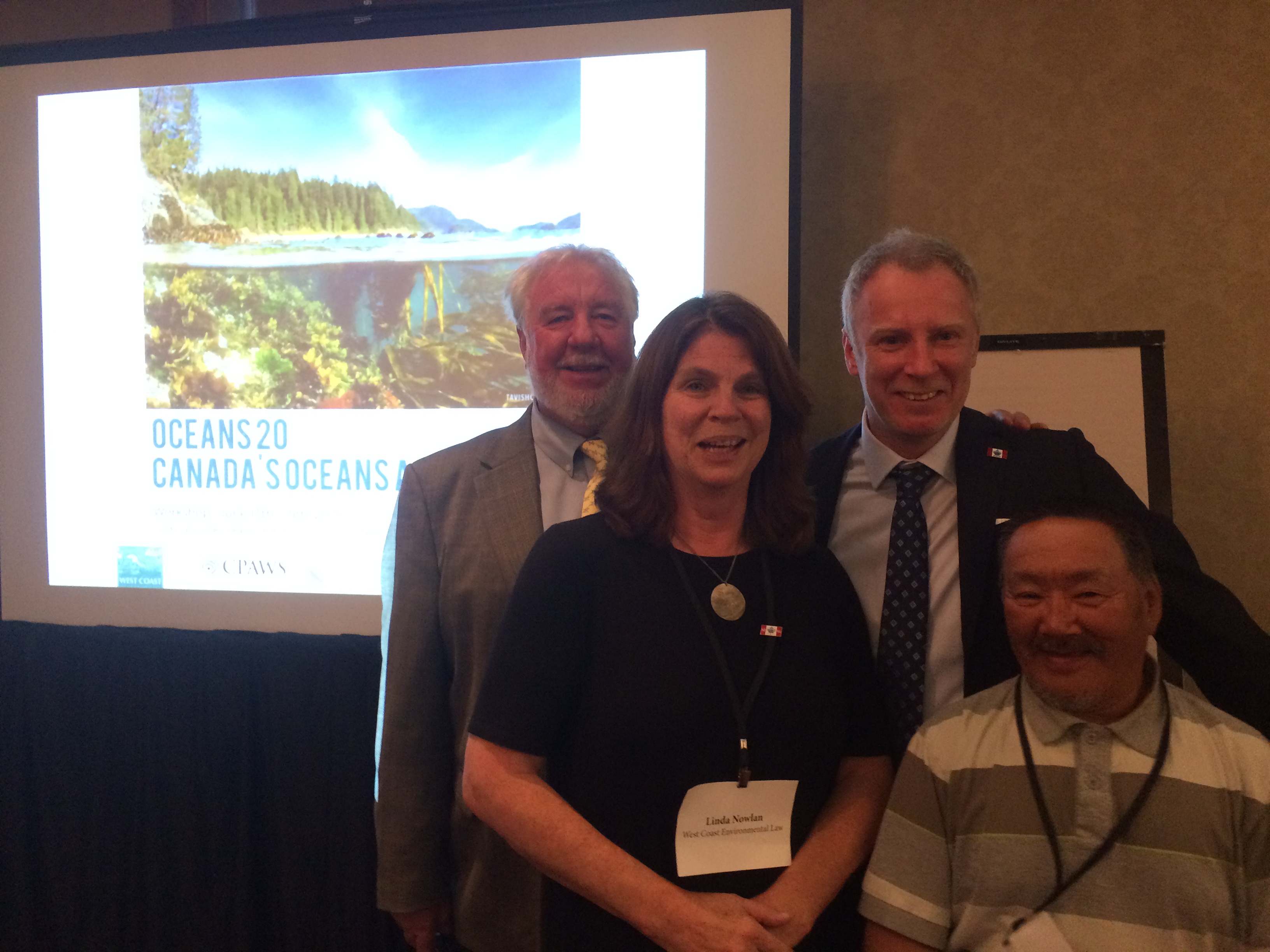Canada was one of the first countries to adopt significant marine protected areas (MPAs) with its ground breaking Oceans Act in 1996. However, in recent years the development of MPAs slowed due to different priorities in the Canadian administration. Last year, the Liberal Government of Justin Trudeau committed to 5% of Canadian Oceans being MPAs by the end of 2017 and 10% by 2020. This is a colossal commitment given the sheer scale of Canadian waters. There are also significant jurisdictional challenges; the extent of federal jurisdiction relative to Canadian provinces is not settled and there are also ongoing coastal claims from Canada’s First Nations.

Environmental Law), Tom Appleby (IWSN), and Sam Palituq (Ninginganiq
Area Co-Management Committee).
The well-respected legal NGO West Coast Environmental Law invited me to talk about the Scottish experience of establishing MPAs at the Oceans 20 – Canada’s Oceans Act workshop in Ottawa. It was also a welcome opportunity to see how MPAs were run in Canada and the US.
The conference demonstrated a real variety of approaches to MPAs and marine planning on Canada’s three coasts. Fisheries and recreational governance on the East coast, the management of cruise ships and oil exploration on the delicate north coast, and complex multi-stakeholder integrated marine planning on the west coast. In all cases the underlying theme was a web of indeterminate jurisdictional boundaries and the challenges of different bureaucracies (and nations) operating in the same space, on top of the usual mix of stakeholders.
Perhaps the most impressive single achievement was from south of the border: the creation of California’s MPA network. This used a public/private partnership: charitable donations shored up an absence of public funding, but also ensured a certain transparency to the process.
The Scottish perspective added a fresh dimension. This was particularly so because Robert Watt, born and raised on the Isle of Arran, was able to give an eyewitness account of the decline in marine life in the Clyde over his eventful life (he moved to Canada in his 20s, with frequent returns to Arran). Robert’s colourful first-hand account added a passion and humour which spoke directly to the audience.
The original Arran no take zone did not have overarching marine protected area legislation to create it (the Marine (Scotland) Act came later) and therefore generated a debate around the first principles of marine management – namely that the marine space is a form of public open space, with publicly owned rights and the government’s duty (be it federal, provincial or First Nation) was to act in the public interest. One of the interesting aspects to me was a realisation that the common law developed by the English was in effect the customary law operating in our part of the world, and how similar the duties were under the public trust developed by the common law to first nation customary rules relating to the management of their natural resources.
At the end of the talk Sam Palituq, the Inuit representative, gave me a smile which shone across the cultural divide. This, more than anything else, demonstrated that fundamental laws such as the public trust doctrine, are a good way of managing across the divide.
Finally, I would like to acknowledge the extraordinary generosity and sheer delightfulness of the Canadians – the residents of a kindred country that we in the UK could learn a lot from.
